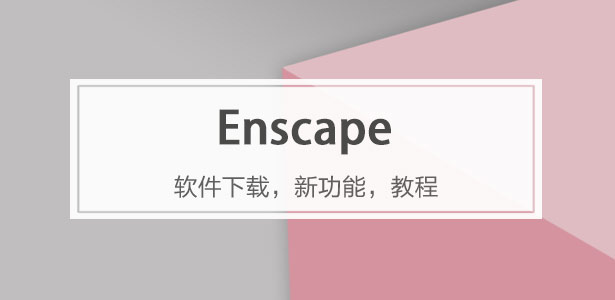* 主體類型
* 企業(yè)名稱
* 信用代碼
* 所在行業(yè)
* 企業(yè)規(guī)模
* 所在職位
* 姓名
* 所在行業(yè)
* 學(xué)歷
* 工作性質(zhì)
請(qǐng)先選擇行業(yè)
您還可以選擇以下福利:
行業(yè)福利,領(lǐng)完即止!

下載app免費(fèi)領(lǐng)取會(huì)員



第三空間圖書館 / NAS architecture
La Source Third-Place Library / NAS architecture
由專筑網(wǎng)Zia,小R編譯
圣約瑟夫禮拜堂建于1638年至1734年間,經(jīng)歷了多次擴(kuò)建和改建,從曾經(jīng)簡(jiǎn)陋的隱士小屋,到使用了在戰(zhàn)爭(zhēng)中被毀的卡斯泰拉斯城堡石材的建筑。自法國(guó)大革命以來,該禮拜堂經(jīng)過多次改造,1995年,附屬的住宅建筑被拆除,在Rue de l'Église與Rue du Grand Pont的轉(zhuǎn)角處形成了一個(gè)小廣場(chǎng)。這個(gè)位于羅什福爾-迪加爾(Rochefort-du-Gard)歷史中心密集都市肌理中的開放空間長(zhǎng)期未被充分利用,該廣場(chǎng)東側(cè)毗鄰圣約瑟夫禮拜堂(曾作為市政廳使用,直至2017年因結(jié)構(gòu)安全風(fēng)險(xiǎn)關(guān)閉),南側(cè)則緊鄰一棟破舊的無窗谷倉(cāng)。
The Saint-Joseph Chapel was built, expanded, and modified between 1638 and 1734, replacing a modest hermitage and using stones from the Castellas Castle, which had been destroyed during the Wars of Religion. Since the French Revolution, the chapel has been repurposed multiple times as a town hall, school, and municipal office. In 1995, the attached residential building was demolished, creating a small square at the corner of Rue de l'Église and Rue du Grand Pont. This open space in the dense urban fabric of Rochefort-du-Gard's historic center had remained underutilized. The square is bordered to the east by the Saint-Joseph Chapel—used as the town hall until it was closed in 2017 due to structural risks—and to the south by a derelict, windowless barn.




圣約瑟夫禮拜堂的翻新與擴(kuò)建工程,將其改造為第三空間圖書館,標(biāo)志著一項(xiàng)重要的城市更新舉措。該項(xiàng)目在保護(hù)文化遺產(chǎn)的同時(shí),為人口流失而受到影響的村莊生活注入了新的活力。其核心目標(biāo)是通過打造充滿活力的文化身份,將羅什福爾-迪加爾社區(qū)凝聚在一起。項(xiàng)目以村莊廣場(chǎng)為中心展開,通過與圖書館一樓的緊密連接,使文化活動(dòng)能夠延伸至戶外空間。北立面配備了折疊式玻璃門,可完全打開,以促進(jìn)與城鎮(zhèn)的互動(dòng),模糊界限并拓展可能性。一座連廊將新圖書館與翻新的圣約瑟夫禮拜堂相連,后者現(xiàn)已改造成數(shù)字博物館,該博物館全年舉辦各種文化主題的多元教育工坊。
The renovation and extension of the Saint-Joseph Chapel into a Third-Place Library marks a significant urban act, preserving heritage while revitalizing the village's daily life, which has been impacted by population decline in favor of surrounding areas. The primary goal was to bring the community of Rochefort-du-Gard together around a vibrant cultural identity. The project is organized around the village square, establishing a strong relationship with the library's ground floor to enable cultural events to extend outdoors. The north façade, fitted with accordion-style folding glass doors, opens completely to foster engagement with the town, blurring boundaries and expanding possibilities. A bridge connects the new library to the rehabilitated Saint-Joseph Chapel, which now houses a digital museum. The museum will host perse educational workshops throughout the year, centered around various cultural themes.



擴(kuò)展部分的材料體現(xiàn)了分層的雙重性。在地面層,混凝土體量形成了保護(hù)性的基座,呼應(yīng)了村莊的石質(zhì)建筑。墻面經(jīng)過鑿毛處理,形成與周圍砌體和諧的紋理和質(zhì)感。混凝土還因其結(jié)構(gòu)強(qiáng)度,跨度超過十五米,當(dāng)折疊門打開時(shí),圖書館的邊界完全消失。上部結(jié)構(gòu)采用木質(zhì)柱梁體系,既增添輕盈感,又可實(shí)現(xiàn)挑檐設(shè)計(jì)和隱蔽的雨水管理。金屬屋頂順應(yīng)鄰近地塊的幾何形態(tài),輕緩地向廣場(chǎng)方向傾斜,并在靠近歷史教堂的位置縮減體量尺度。與教堂不透明的立面形成對(duì)比,圖書館通過大面積窗戶強(qiáng)調(diào)水平通透性,邀請(qǐng)居民進(jìn)入這一新的文化活力區(qū)域。
The materials of the extension reflect a layered duality. At ground level, the mass of the concrete base forms a protective plinth that echoes the village's stone architecture. The walls are bush-hammered to develop a texture and patina that harmonize with the surrounding masonry. Concrete is also used for its structural strength, allowing a span of over fifteen meters so that the library's boundary disappears entirely when the folding doors are opened. The upper level is built with a wooden post-and-beam structure, adding lightness while allowing for overhangs and discreet rainwater management. The metal roof adjusts to the neighboring parcel's geometry, sloping gently toward the square and reducing the volume's scale near the historic chapel. In contrast with the chapel's opaque façade, the library emphasizes horizontal transparency with large windows that invite residents to enter and take part in this new cultural energy.


內(nèi)部空間簡(jiǎn)潔而克制。圖書館的獨(dú)特性源于其原材料與建筑結(jié)構(gòu)的外露。地面層的外墻鋪裝延伸至室內(nèi),形成以混凝土柱為標(biāo)志的中央服務(wù)軸線。該區(qū)域包含衛(wèi)生間、接待區(qū)、垂直交通及技術(shù)用房。木質(zhì)填充結(jié)構(gòu)用于圍合空間、嵌入家具及布置管線網(wǎng)絡(luò)。這種交替的節(jié)奏營(yíng)造出靈活的模塊化布局。樓上的木質(zhì)門廊與窗框?qū)R,引導(dǎo)視線向下望向村莊廣場(chǎng)。天花板結(jié)構(gòu)由松木椽子和面板組成,形成寧靜的閱讀區(qū)。
The interior spaces are designed with clarity and restraint. The library's identity emerges from its raw materials and the legibility of its construction. At ground level, the exterior paving continues inside, leading to a central service spine marked by concrete columns. This zone includes restrooms, reception, vertical circulation, and technical rooms. Wood infill is used to enclose these spaces, incorporate built-in furniture, and route utility networks. This alternating rhythm creates a flexible, modular layout. Upstairs, timber portals align with the window frames and guide views toward the village square below. The ceiling structure, comprising pine rafters and panels, forms the underside of a calm reading area.



新的木制家具內(nèi)置了所有必要的數(shù)字設(shè)備,并界定了開放式展覽空間內(nèi)的館長(zhǎng)辦公室。一盞大型吊燈為低調(diào)的改造畫龍點(diǎn)睛,既保留了禮拜堂的空間品質(zhì),又將其重新構(gòu)想為當(dāng)代文化場(chǎng)所。第三空間圖書館作為一座橋梁,連接了羅什福爾-迪加爾村的重要文化遺產(chǎn)與全新設(shè)施,這是一座開放并致力于惠及所有居民的文化設(shè)施。
New wooden furniture houses all the necessary digital museum equipment and delineates the director's office, which is open to the exhibition space. A large pendant light completes the understated intervention, preserving the chapel's spatial quality while reimagining it as a contemporary cultural venue. The Third-Place Library acts as a bridge between an important heritage of the Village of Rochefort-du-Gard and a new facility resolutely open and focused on making culture available to all.















建筑設(shè)計(jì):NAS architecture
類型:文化建筑/圖書館
面積:500 m²
攝影:Severin Malaud
主創(chuàng)建筑師:Johan Laure, Guillaume Ballast
工程部:INSE
設(shè)計(jì)團(tuán)隊(duì):NAS architecture
城市:羅什福爾-迪加爾
國(guó)家:法國(guó)
Cultural Architecture, Library, Renovation•Rochefort-du-Gard, France
Architects: NAS architecture
Area: 500 m²
Photographs:Severin Malaud
Lead Architects: Johan Laure, Guillaume Ballast
Engineering Office: INSE
Quantity Surveyor: AR.TO.TEC
Category: Cultural Architecture, Library, Renovation
Design Team: NAS architecture
City: Rochefort-du-Gard
Country: France
本文版權(quán)歸腿腿教學(xué)網(wǎng)及原創(chuàng)作者所有,未經(jīng)授權(quán),謝絕轉(zhuǎn)載。

下一篇:淀川設(shè)計(jì)|社區(qū)聚場(chǎng),Moi日咖夜酒
猜你喜歡

BIM建筑|2024,有方編輯部年度內(nèi)容

BIM建筑|紹興天地:芯片廠變身城市商業(yè)客廳 / Kokaistudios + AICO

BIM建筑|搶先看:2025,全球?qū)⒙涑砷_放的42座精彩建筑

BIM建筑|10位你應(yīng)該認(rèn)識(shí)的黑白攝影大師

BIM建筑|經(jīng)典再讀228 | 薩拉巴伊別墅/勒·柯布西耶:花園宮殿

BIM建筑|深圳灣超級(jí)總部基地20圖:從渲染到實(shí)景
最新課程

施工BIM定制化培訓(xùn)
Revit
48883人已學(xué)

BIM土建實(shí)戰(zhàn)訓(xùn)練 - A部分標(biāo)準(zhǔn)化建模指導(dǎo)
Revit
7087人已學(xué)

BIM土建實(shí)戰(zhàn)訓(xùn)練 - B部分 場(chǎng)地與基礎(chǔ)模型創(chuàng)建
Revit
10255人已學(xué)

BIM土建實(shí)戰(zhàn)訓(xùn)練 - C部分 地下室土建模型創(chuàng)建
Revit
15569人已學(xué)

BIM土建實(shí)戰(zhàn)訓(xùn)練 - D部分 協(xié)同工作
Revit
3249人已學(xué)

BIM土建實(shí)戰(zhàn)訓(xùn)練 - E部分 裙房及塔樓模型創(chuàng)建
Revit
5984人已學(xué)
推薦專題
- 廈門大學(xué)附屬科技中學(xué)五緣校區(qū) / 合立道設(shè)計(jì)一致建筑工作室
- 花盒咖啡:一座與城市同呼吸的生命體
- BIG新作:用29塊“漂浮”屋面,搭建層疊木構(gòu)
- 未完工就被搶空!沖繩這座酒店無邊池連大海,桑拿房能看“水下光影”
- 小隱建筑新作:不在山林,川南百年梨園中的山野秘境
- 中標(biāo)候選方案|中國(guó)民航大學(xué)C區(qū)規(guī)劃及單體設(shè)計(jì):渦輪綠谷,智慧云臺(tái) / 華工設(shè)計(jì)院
- 木頭會(huì)記憶,泥土?xí)粑哌M(jìn)能“長(zhǎng)大”的建筑
- 經(jīng)典再讀238 | 塞圖巴爾教師學(xué)校/西扎:理性與個(gè)性并存
- gad中標(biāo)方案:迪拜Lumena?by Omniyat,超高層新地標(biāo)
- 山川臥龍,江山市虎山運(yùn)動(dòng)公園游泳館



































